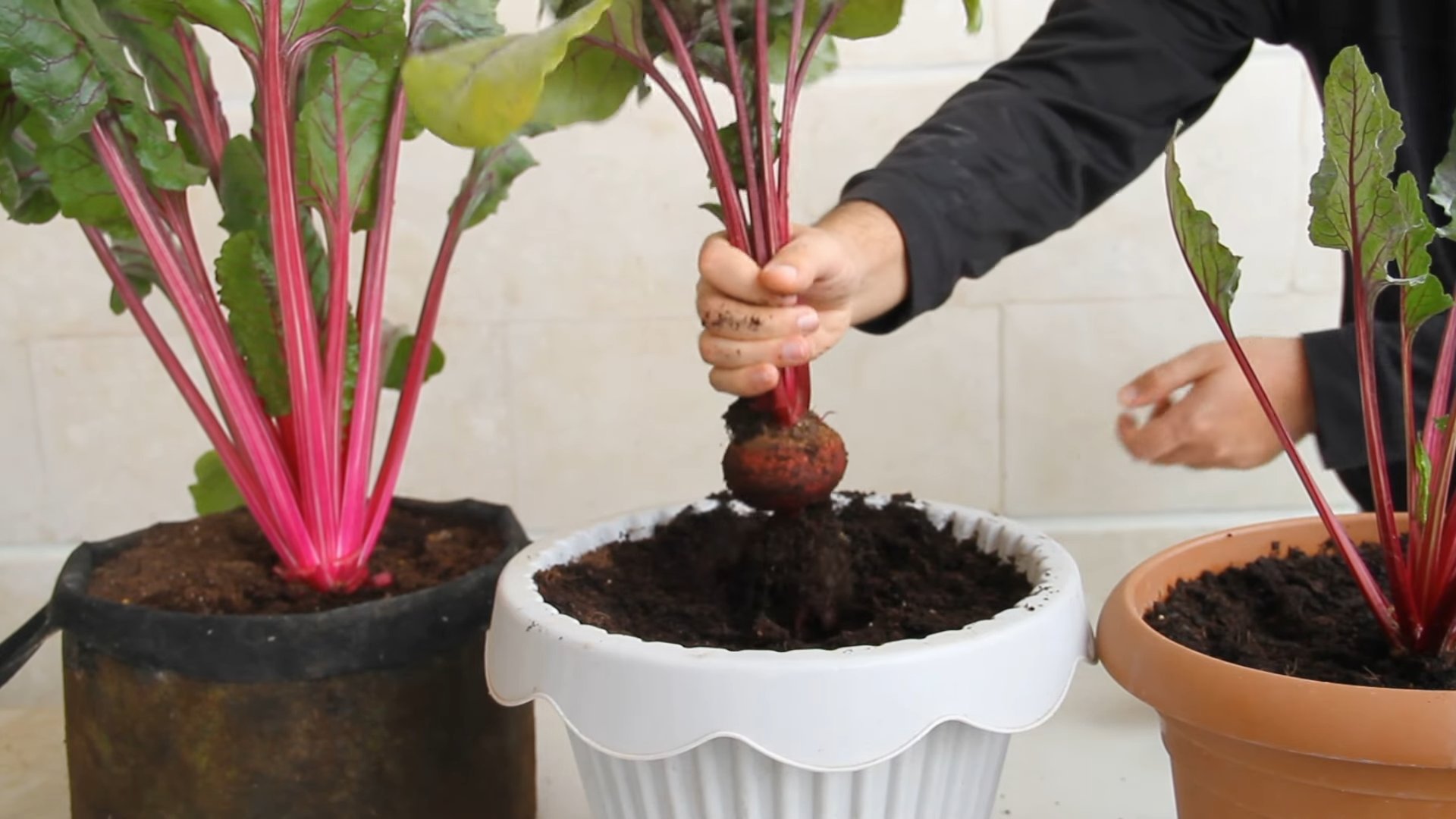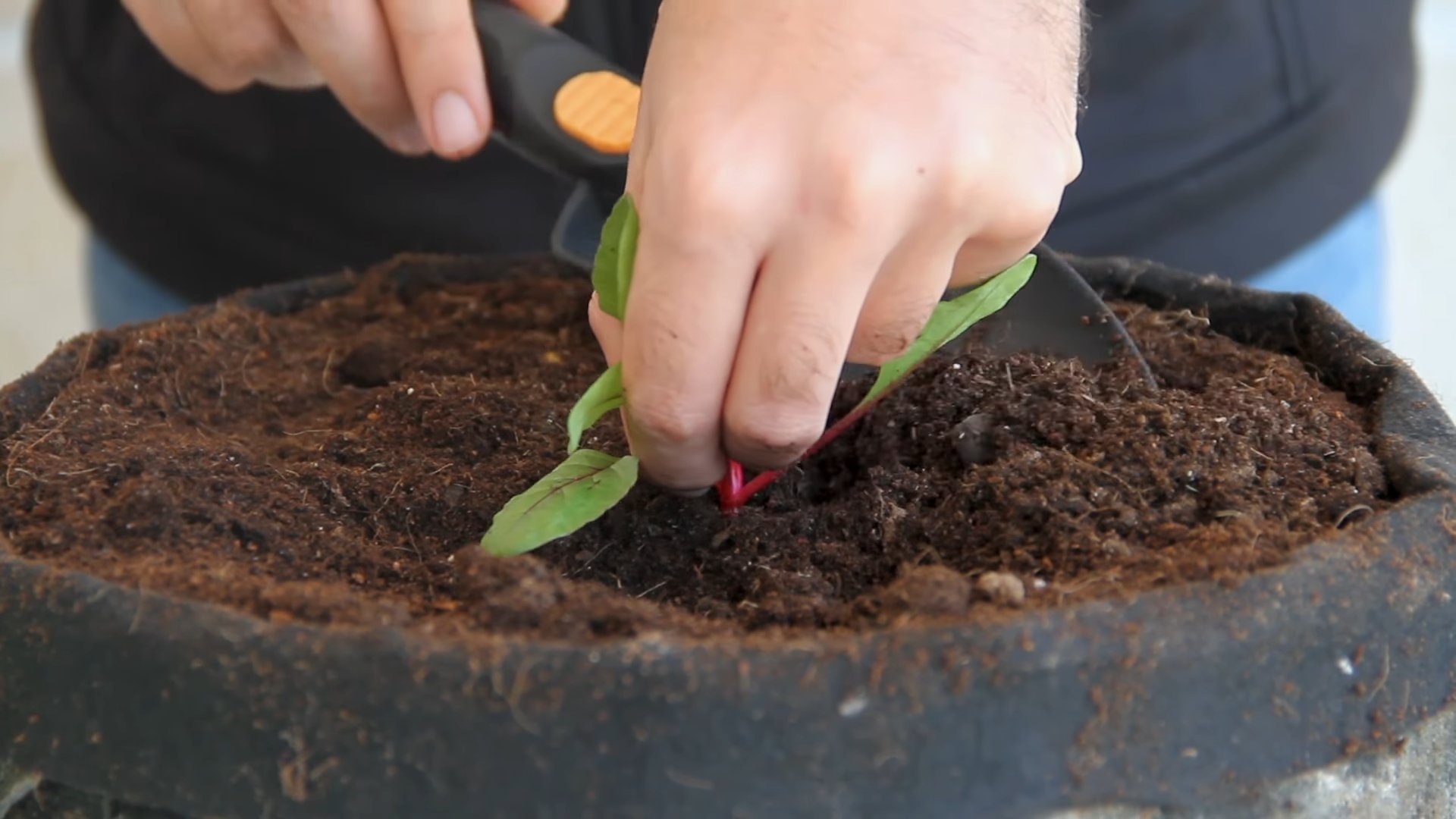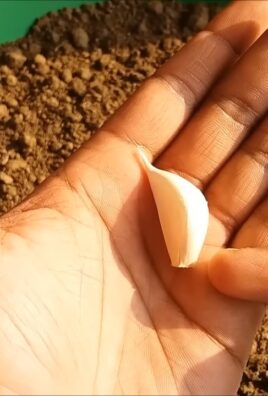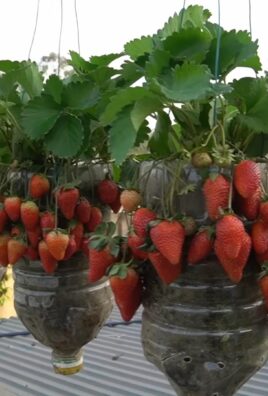Growing beets indoors might sound like a challenge, but trust me, it’s a surprisingly rewarding experience! Forget those bland, store-bought beets – imagine harvesting your own sweet, earthy gems right from your windowsill. For centuries, beets have been cultivated for their vibrant roots and nutritious greens, dating back to ancient Roman times where they were valued for their medicinal properties. Now, you can bring this ancient tradition into your modern home, regardless of your outdoor space.
Are you tired of relying on grocery stores for fresh produce, especially during the colder months? Do you dream of adding a pop of color and nutrition to your meals with homegrown goodness? Then this DIY guide is for you! Growing beets indoors offers a fantastic solution for urban dwellers, apartment residents, or anyone looking to extend their growing season. I’m going to share my favorite tips and tricks to ensure your indoor beet garden thrives, providing you with a continuous supply of delicious and healthy beets. Get ready to roll up your sleeves and discover the joy of indoor gardening!

Growing Beets Indoors: A Beginner’s Guide
Hey there, fellow gardening enthusiasts! Ever thought about growing beets indoors? It’s totally doable, and honestly, it’s a rewarding experience, especially when you can harvest fresh, earthy beets right from your windowsill. I’ve been doing it for a while now, and I’m excited to share my tips and tricks with you. Let’s dive in!
Choosing the Right Beet Variety
First things first, not all beet varieties are created equal when it comes to indoor growing. You’ll want to pick varieties that are known for their smaller size and faster maturity. Here are a few of my favorites:
* ‘Baby Beet’: As the name suggests, these stay small and are perfect for containers.
* ‘Early Wonder’: These mature quickly, giving you a harvest sooner.
* ‘Detroit Dark Red’: A classic choice that also does well indoors, though they might need a slightly larger container.
* ‘Golden Beet’: Adds a splash of color and has a milder flavor.
Gathering Your Supplies
Before we get our hands dirty, let’s make sure we have everything we need. Here’s a checklist:
* Beet Seeds: Choose your desired variety from the list above.
* Containers: Opt for pots that are at least 6-8 inches deep and wide. Good drainage is crucial!
* Potting Mix: Use a high-quality, well-draining potting mix. Avoid garden soil, as it can compact and hinder growth.
* Grow Lights (Optional but Recommended): Especially if you don’t have a super sunny window.
* Watering Can or Spray Bottle: For gentle watering.
* Fertilizer: A balanced liquid fertilizer diluted to half strength.
* Seed Starting Tray (Optional): For starting seeds indoors before transplanting.
Planting Your Beet Seeds
Okay, let’s get planting! This is where the magic begins.
1. Prepare Your Containers: Fill your containers with the potting mix, leaving about an inch of space at the top. Gently pat down the soil.
2. Sow the Seeds: Sow the beet seeds about ½ inch deep and 1-2 inches apart. Beets are often multigerm seeds, meaning each seed can produce multiple seedlings. Don’t worry, we’ll thin them out later.
3. Water Gently: Water the soil gently until it’s evenly moist but not soggy. A spray bottle works well for this.
4. Provide Light: Place your containers in a sunny window that receives at least 6 hours of direct sunlight per day. If you don’t have enough natural light, use grow lights. Position the lights a few inches above the soil surface.
5. Maintain Temperature: Beets prefer temperatures between 60-70°F (15-21°C).
Caring for Your Beet Plants
Now that your seeds are planted, it’s time to nurture them into healthy beet plants.
1. Watering: Keep the soil consistently moist but not waterlogged. Check the soil moisture regularly by sticking your finger about an inch deep. If it feels dry, it’s time to water.
2. Thinning: Once the seedlings emerge and have a few true leaves (the second set of leaves), thin them out to about 2-3 inches apart. This gives each plant enough space to grow. Gently snip off the weaker seedlings at the soil line with scissors. Don’t pull them out, as this can disturb the roots of the remaining plants.
3. Fertilizing: Start fertilizing your beet plants about 2-3 weeks after they emerge. Use a balanced liquid fertilizer diluted to half strength. Fertilize every 2-3 weeks.
4. Rotating: If you’re using a windowsill, rotate your containers regularly to ensure that all sides of the plants receive equal sunlight. This will prevent them from leaning towards the light source.
5. Pest Control: Keep an eye out for common pests like aphids or spider mites. If you spot any, you can try spraying them with a solution of soapy water. Mix a few drops of dish soap (not detergent) with water in a spray bottle and spray the affected areas.
Using Grow Lights for Indoor Beets
If you’re like me and don’t have the sunniest windows, grow lights are your best friend. They provide the necessary light for your beets to thrive.
* Types of Grow Lights: LED grow lights are energy-efficient and don’t produce much heat, making them a great choice for indoor gardening. Fluorescent grow lights are another option, but they’re not as energy-efficient as LEDs.
* Light Spectrum: Look for grow lights that provide a full spectrum of light, which means they emit light across the entire range of colors that plants need for photosynthesis.
* Light Intensity: The intensity of the light is also important. You’ll want to provide enough light to support healthy growth, but not so much that it burns the plants. Start with the lights a few inches above the soil surface and adjust as needed.
* Light Duration: Aim to provide your beet plants with 12-16 hours of light per day. You can use a timer to automate the process.
Harvesting Your Beets
The moment we’ve all been waiting for! Harvesting your homegrown beets is incredibly satisfying.
1. Maturity: Beets are typically ready to harvest in 50-70 days, depending on the variety. You can harvest them when the roots are about 1-3 inches in diameter.
2. Checking for Readiness: Gently brush away some of the soil around the base of the plant to check the size of the beet.
3. Harvesting Technique: Gently loosen the soil around the beet and pull it out of the ground. If the soil is dry, water it a few hours before harvesting to make it easier to pull the beets out.
4. Leafy Greens: Don’t forget about the beet greens! They’re also edible and delicious. You can harvest them at any time, but be sure to leave at least a few leaves on each plant so it can continue to grow.
Troubleshooting Common Problems
Even with the best care, you might encounter a few challenges along the way. Here are some common problems and how to fix them:
* Leggy Seedlings: This means your seedlings are stretching towards the light because they’re not getting enough. Move them closer to the light source or use grow lights.
* Yellowing Leaves: This could be a sign of overwatering or nutrient deficiency. Make sure the soil is well-draining and fertilize regularly.
* Slow Growth: This could be due to insufficient light, poor soil, or lack of nutrients. Provide more light, use a high-quality potting mix, and fertilize regularly.
* Pests: As mentioned earlier, keep an eye out for pests and treat them promptly with soapy water or other organic pest control methods.
Enjoying Your Harvest
Now that you’ve harvested your beets, it’s time to enjoy the fruits (or rather, roots) of your labor!
* Storage: Store your beets in the refrigerator for up to a week. Remove the greens before storing, as they can draw moisture from the roots.
* Cooking: Beets can be roasted, boiled, steamed, or even eaten raw. They’re delicious in salads, soups, and side dishes.
* Beet Greens: Don’t throw away the beet greens! They can be cooked like spinach or kale. Sauté them with garlic and olive oil for a simple and healthy side dish.
Extra Tips for Success
Here are a few extra tips to help you succeed with growing beets indoors:
* Succession Planting: Plant new seeds every few weeks to ensure a continuous harvest.
* Companion Planting: Plant beets alongside other vegetables like lettuce, radishes, or onions. These plants can help deter pests and improve soil health.
* Soil Testing: If you’re having trouble with your beets, consider testing your soil to check its pH and nutrient levels. This can help you identify any deficiencies and adjust your fertilizing accordingly.
* Record Keeping: Keep a record of your planting dates, watering schedule, and any problems you encounter. This will help you learn from your mistakes and improve your gardening skills over time.
Growing beets indoors is a fun and rewarding experience. With a little bit of care and attention, you can enjoy fresh, homegrown beets all year round. Happy gardening!

Conclusion
So, there you have it! Growing beets indoors is not only possible, but it’s also a surprisingly rewarding experience. Forget relying solely on grocery store produce; imagine the satisfaction of harvesting your own vibrant, earthy beets right from your windowsill, even in the dead of winter. This DIY project is a must-try for anyone looking to add a touch of green to their home, embrace sustainable living, and enjoy the unparalleled flavor of freshly grown vegetables.
The beauty of growing beets indoors lies in its adaptability. While we’ve outlined a straightforward method, feel free to experiment! Consider trying different varieties of beets, such as golden beets for a milder flavor or Chioggia beets for their beautiful concentric rings. You can also adjust the lighting setup based on your available space and budget. A simple fluorescent shop light can work wonders, or you can invest in a more sophisticated LED grow light for optimal results.
Don’t be afraid to get creative with your containers, either. While we recommended pots, you could also use repurposed containers like plastic tubs or even old buckets, as long as they have adequate drainage. Just remember to adjust the watering schedule accordingly based on the container size and material.
Beyond the beets themselves, don’t forget about the beet greens! These leafy tops are incredibly nutritious and delicious. Use them in salads, sauté them with garlic and olive oil, or add them to soups and stews. They offer a slightly peppery flavor that complements a wide range of dishes.
Growing beets indoors is a fantastic way to connect with nature, even when you’re stuck inside. It’s a simple, affordable, and incredibly satisfying project that anyone can undertake. We encourage you to give it a try and discover the joy of homegrown beets.
But the journey doesn’t end there! We want to hear about your experiences. Did you try a different variety of beet? Did you encounter any challenges along the way? Share your tips, tricks, and triumphs in the comments below. Let’s build a community of indoor beet growers and learn from each other. Your insights could help someone else successfully cultivate their own indoor beet garden. So, grab your seeds, get your hands dirty, and let’s grow some beets! We can’t wait to see what you create.
Frequently Asked Questions (FAQs)
What are the best beet varieties to grow indoors?
While most beet varieties can be grown indoors, some tend to perform better than others due to their size and growth habits. Smaller, more compact varieties like ‘Baby Beet,’ ‘Early Wonder,’ and ‘Detroit Dark Red’ are generally recommended. These varieties mature relatively quickly and don’t require as much space as larger varieties. However, don’t be afraid to experiment with other types! Just be mindful of the space requirements and adjust your growing conditions accordingly. Consider also the color and flavor profile you prefer. Golden beets, for example, offer a milder, sweeter flavor than their red counterparts.
How much light do beets need when grown indoors?
Beets require a significant amount of light to thrive indoors. Ideally, they need at least 6-8 hours of direct sunlight per day. If you don’t have a sunny windowsill, you’ll need to supplement with artificial lighting. Fluorescent grow lights or LED grow lights are excellent options. Position the lights a few inches above the plants and adjust the height as they grow. A good rule of thumb is to provide at least 14-16 hours of light per day for optimal growth. Insufficient light can lead to leggy growth and poor beet development.
What type of soil is best for growing beets indoors?
Beets prefer well-draining, fertile soil with a slightly acidic to neutral pH (around 6.0-7.0). A good potting mix specifically formulated for vegetables is ideal. You can also create your own mix by combining equal parts of potting soil, compost, and perlite or vermiculite. The compost provides essential nutrients, while the perlite or vermiculite improves drainage and aeration. Avoid using garden soil, as it can be too heavy and may contain pests or diseases.
How often should I water my indoor beet plants?
Water your beet plants regularly, keeping the soil consistently moist but not waterlogged. Check the soil moisture level by sticking your finger about an inch into the soil. If it feels dry, it’s time to water. Water deeply, allowing the excess water to drain out of the bottom of the pot. Avoid overwatering, as this can lead to root rot. The frequency of watering will depend on factors such as the size of the pot, the type of soil, and the temperature and humidity of your home.
When can I harvest my indoor beets?
Beets are typically ready to harvest about 50-70 days after planting, depending on the variety. You can harvest them when the roots are about 1-3 inches in diameter. Gently loosen the soil around the beets and pull them out of the pot. You can also harvest the beet greens at any time, but be sure to leave at least a few leaves on each plant to allow the beets to continue growing. The greens are most tender when they are young and small.
Can I grow beets indoors in containers?
Yes, growing beets indoors in containers is a great way to enjoy fresh beets year-round. Choose containers that are at least 6-8 inches deep and wide to allow the beets to develop properly. Make sure the containers have drainage holes to prevent waterlogging. You can use plastic pots, terracotta pots, or even repurposed containers like plastic tubs or buckets.
What are some common problems when growing beets indoors and how can I fix them?
Some common problems when growing beets indoors include:
* **Leggy growth:** This is usually caused by insufficient light. Provide more light by moving the plants to a sunnier location or supplementing with artificial lighting.
* **Yellowing leaves:** This can be caused by overwatering, underwatering, or nutrient deficiencies. Adjust your watering schedule and fertilize with a balanced fertilizer.
* **Pests:** Aphids and spider mites are common pests that can infest indoor beet plants. Inspect your plants regularly and treat any infestations with insecticidal soap or neem oil.
* **Root rot:** This is caused by overwatering and poor drainage. Make sure your containers have drainage holes and avoid overwatering.
Can I use the same soil for growing beets again?
It’s generally not recommended to reuse the same soil for growing beets, especially if you’ve experienced any pest or disease problems. The soil may be depleted of nutrients and could harbor harmful pathogens. It’s best to start with fresh potting mix each time you plant beets. If you do want to reuse the soil, you can sterilize it by baking it in the oven at 180°F (82°C) for 30 minutes or by solarizing it in a black plastic bag for several weeks. However, even after sterilization, you’ll still need to amend the soil with compost and other nutrients.
How do I store harvested beets?
After harvesting, remove the beet greens, leaving about an inch of stem attached to the beet. Gently brush off any excess soil. Store the beets in a plastic bag in the refrigerator for up to 2-3 weeks. The beet greens can be stored separately in a plastic bag in the refrigerator for up to 3-5 days.
Is growing beets indoors difficult?
No, growing beets indoors is not difficult, especially if you follow the guidelines outlined in this article. With a little bit of attention and care, you can successfully grow your own delicious and nutritious beets indoors. The key is to provide adequate light, water, and nutrients, and to monitor your plants for any signs of pests or diseases. Don’t be afraid to experiment and learn from your experiences.




Leave a Comment